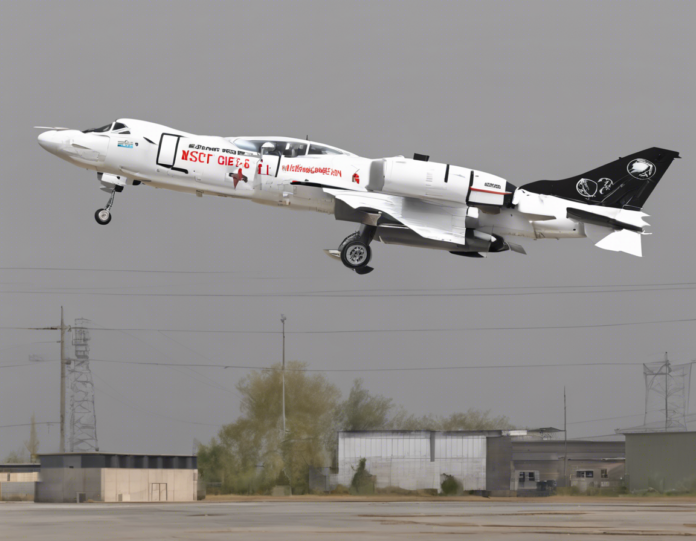Introduction
NASA’s Goddard Space Flight Center (GSFC) is renowned for its role in collecting, analyzing, and disseminating vast amounts of data related to Earth science, astrophysics, heliophysics, and planetary science. The center’s data collection systems are crucial in advancing our understanding of the universe and our planet. In this article, we will take a closer look at GSFC’s data collection systems, including their purpose, scope, technologies involved, and the significance of the data collected.
GSFC Data Collection Systems
Purpose and Scope
GSFC's data collection systems serve multiple purposes across various scientific disciplines. These systems are designed to gather, process, and store data from satellites, observatories, and other scientific missions. The collected data is used for a wide range of applications, including climate monitoring, disaster response, space exploration, and fundamental research. The scope of GSFC’s data collection systems spans from Earth-centric observations to deep-space missions.
Technologies Involved
GSFC employs a wide array of cutting-edge technologies in its data collection systems. These technologies include advanced sensors, telemetry systems, data processing algorithms, and high-performance computing infrastructure. The center leverages both ground-based and space-based instruments to collect data from various sources, such as satellites, rovers, telescopes, and instruments aboard the International Space Station. The integration of these technologies enables GSFC to capture and analyze data from multiple vantage points in space and on Earth.
Significance of Data Collected
The data collected by GSFC’s systems plays a vital role in advancing scientific knowledge and addressing real-world challenges. For example, Earth observation data is used to monitor climate change, track natural disasters, and manage natural resources. Astrophysics data helps researchers study the origins of the universe, explore celestial phenomena, and search for exoplanets. Heliophysics data contributes to our understanding of space weather, solar phenomena, and their impact on technology and society. Planetary science data aids in the exploration of our solar system, the search for life beyond Earth, and the assessment of planetary conditions. Overall, the data collected by GSFC’s systems fuels groundbreaking research and informs decision-making in fields ranging from environmental science to space exploration.
Challenges and Future Directions
Despite the advancements in GSFC’s data collection systems, several challenges persist. These challenges include managing the sheer volume of data generated, ensuring data quality and accuracy, integrating data from diverse sources, and enabling timely access to data for researchers and decision-makers. To address these challenges, GSFC is continuously innovating its data collection systems by adopting new technologies, improving data management practices, enhancing data processing algorithms, and promoting data sharing and collaboration within the scientific community. Looking ahead, GSFC is poised to leverage emerging technologies such as artificial intelligence, machine learning, and cloud computing to enhance its data collection capabilities and extract more insights from the vast amounts of data collected. By staying at the forefront of data science and technology, GSFC will continue to push the boundaries of scientific discovery and contribute to addressing some of the most pressing challenges facing our planet and beyond.
Frequently Asked Questions (FAQs)
- What types of data are collected by GSFC’s data collection systems?
-
GSFC’s data collection systems gather a wide range of data, including Earth observation data, astrophysics data, heliophysics data, and planetary science data.
-
How is the data collected by GSFC’s systems used in scientific research?
-
The data collected by GSFC’s systems is used in scientific research to study climate change, natural disasters, celestial phenomena, space weather, planetary conditions, and more.
-
What technologies are involved in GSFC’s data collection systems?
-
GSFC’s data collection systems utilize advanced sensors, telemetry systems, data processing algorithms, high-performance computing infrastructure, and ground-based and space-based instruments.
-
How does GSFC address the challenges associated with managing data collected from diverse sources?
-
GSFC addresses data management challenges by adopting new technologies, improving data processing algorithms, promoting data sharing, and collaboration within the scientific community.
-
What are some of the future directions for GSFC’s data collection systems?
- GSFC’s future directions include leveraging emerging technologies such as artificial intelligence, machine learning, and cloud computing to enhance data collection capabilities and extract more insights from the data collected.
In conclusion, GSFC’s data collection systems are indispensable tools for advancing scientific research, monitoring our planet, exploring the universe, and addressing societal challenges. By pushing the boundaries of data science and technology, GSFC continues to be at the forefront of data collection and analysis, paving the way for new discoveries and innovations in space and Earth sciences.


Recent comments